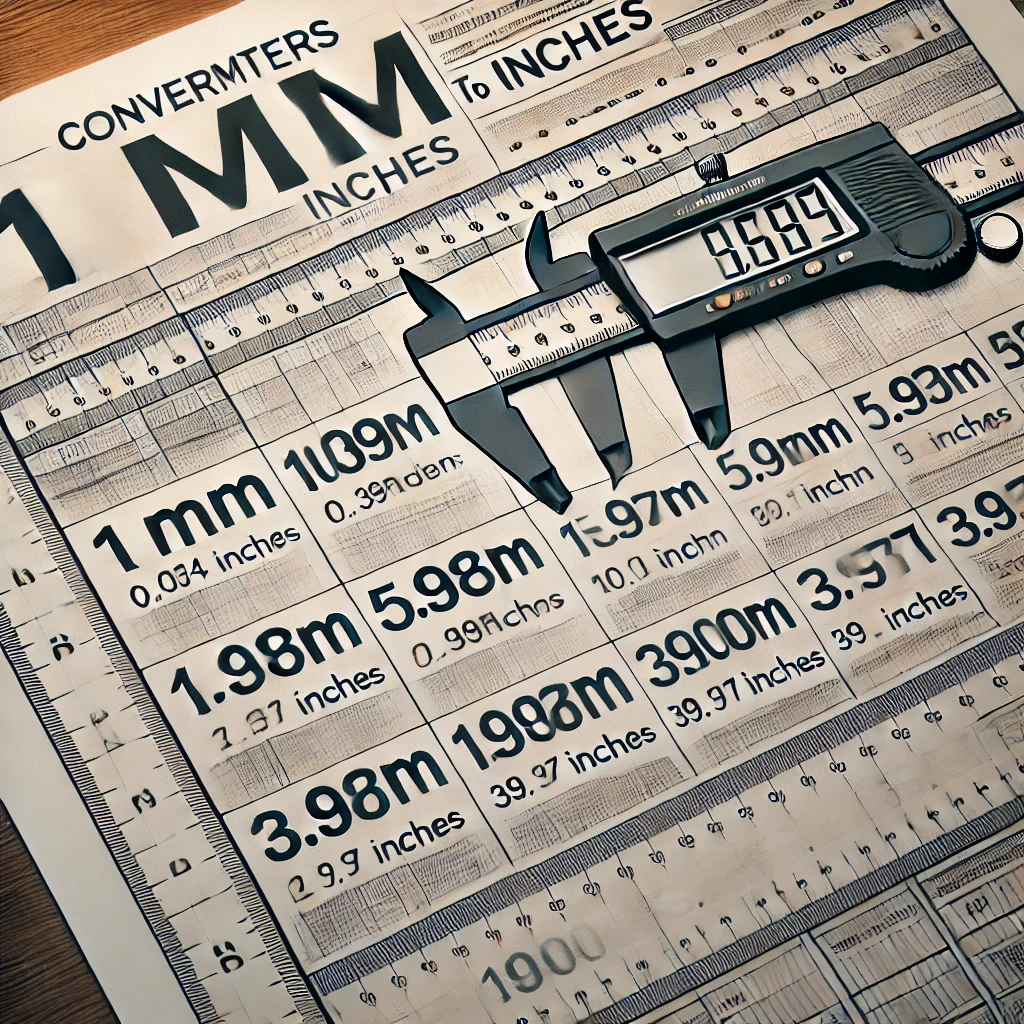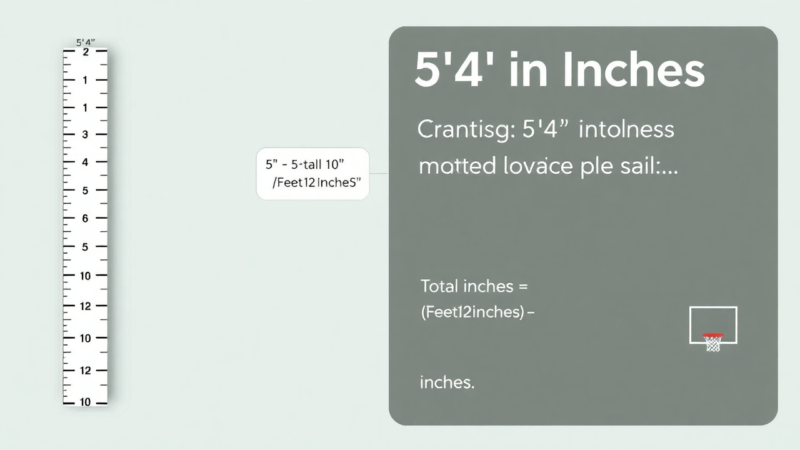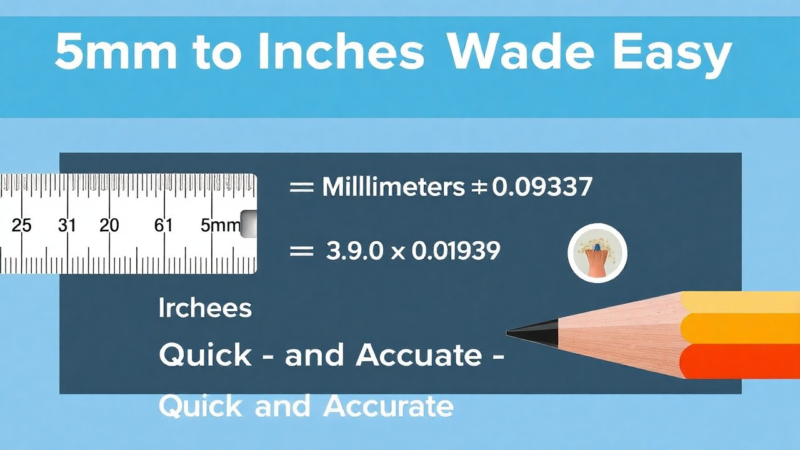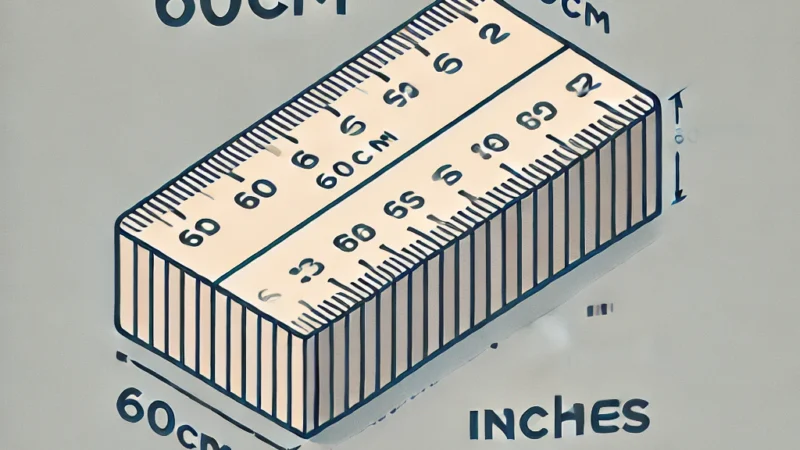Millimeters to Inches – The Ultimate Conversion Guide

Understanding Millimeters and Inches
Millimeters to inches (in) are both units of length used worldwide. The millimeter is part of the metric system, commonly used in science, engineering, and medicine. The inch, on the other hand, is primarily used in the United States, Canada, and the United Kingdom as part of the imperial and US customary measurement systems.
The millimeter is a very small unit of measurement, equivalent to one-thousandth of a meter. It is widely used in fields requiring high precision, such as engineering and manufacturing. The inch, which equals 25.4 mm, is a longer unit commonly used for measuring objects like screens, furniture, and human height.
Millimeters to Inches Conversion Formula
The standard formula to convert millimeters to inches is:
To convert millimeters to inches, simply multiply the number of millimeters by 0.0393701.
Quick Conversion Table
| Millimeters (mm) | Inches (in) |
|---|---|
| 1 mm | 0.0394 in |
| 5 mm | 0.1969 in |
| 10 mm | 0.3937 in |
| 50 mm | 1.9685 in |
| 100 mm | 3.937 in |
| 500 mm | 19.685 in |
| 1000 mm | 39.3701 in |
Step-by-Step Guide: Converting Millimeters to Inches
- Multiply the length value in millimeters by 0.0393701.
- Round off the result to the desired decimal place for accuracy.
- Use a calculator if the number is large, ensuring precision.
- Verify with a conversion table or an online converter if necessary.
Example Calculation
Convert 150 mm to inches:
Thus, 150 mm is approximately 5.91 inches.
Why Convert Millimeters to Inches?
- Engineering & Manufacturing – Many industries require precision in measurements, especially when working with different measurement systems.
- Home Improvement & DIY Projects – Many blueprints and designs use inches, while some tools use metric units.
- Medical & Scientific Applications – Many instruments and measurements use millimeters but need conversion for international usage.
- Automobile Industry – Car part specifications often use both metric and imperial measurements.
- Fashion & Textile Industry – Clothing sizes and fabric dimensions may be listed in either unit.
Commonly Used Conversions
Everyday Objects and Their Approximate Measurements
- A credit card’s thickness: 0.76 mm ≈ 0.03 in
- A paperclip: 10 mm ≈ 0.39 in
- A standard pencil diameter: 7 mm ≈ 0.28 in
- A standard smartphone thickness: 8 mm ≈ 0.31 in
- A car key thickness: 2 mm ≈ 0.08 in
- A small screw diameter: 4 mm ≈ 0.16 in
- A standard AA battery height: 50.5 mm ≈ 1.99 in
- A compact disc (CD) thickness: 1.2 mm ≈ 0.047 in
Millimeters and Inches in Different Fields
1. Construction and Carpentry
Builders and carpenters often work with both metric and imperial systems. For example, wood panels, pipes, and bolts are measured in inches, while finer measurements such as screw diameters may be in millimeters.
2. Medical and Healthcare Industry
Medical instruments like syringes, scalpels, and even dental braces are measured in millimeters for precision.
3. Science and Research
In scientific fields, millimeters are commonly used to measure microscopic objects, cell sizes, and material thickness.
4. Technology and Electronics
Electronic devices, including screen sizes, computer components, and circuit boards, often use both inches and millimeters.
Using Online Conversion Tools
For instant and accurate conversions, various online tools and mobile applications can assist. Simply enter the value in millimeters, and the tool will automatically provide the inches equivalent.
Manual Approximate Conversion Trick
If you don’t have a calculator or internet access, you can use a rough estimation method:
- To convert mm to inches quickly, divide the millimeter value by 25.4.
- Example: Convert 300 mm to inches:
Frequently Asked Questions
1. How do I convert inches to millimeters?
To convert inches to millimeters, multiply the number of inches by 25.4.
2. Is 1 mm less than 1 inch?
Yes, 1 mm is much smaller than 1 inch. 1 inch is equal to 25.4 mm.
3. What is 10 mm in inches?
10 mm is approximately 0.3937 inches.
4. How many inches is 1000 mm?
1000 mm is approximately 39.37 inches, which is a little over 3 feet.
Conclusion
Understanding how to convert millimeters to inches is essential for various fields, including engineering, construction, medicine, and everyday tasks. Using the simple formula, tables, and conversion tips outlined in this article, you can easily switch between these measurement units.





